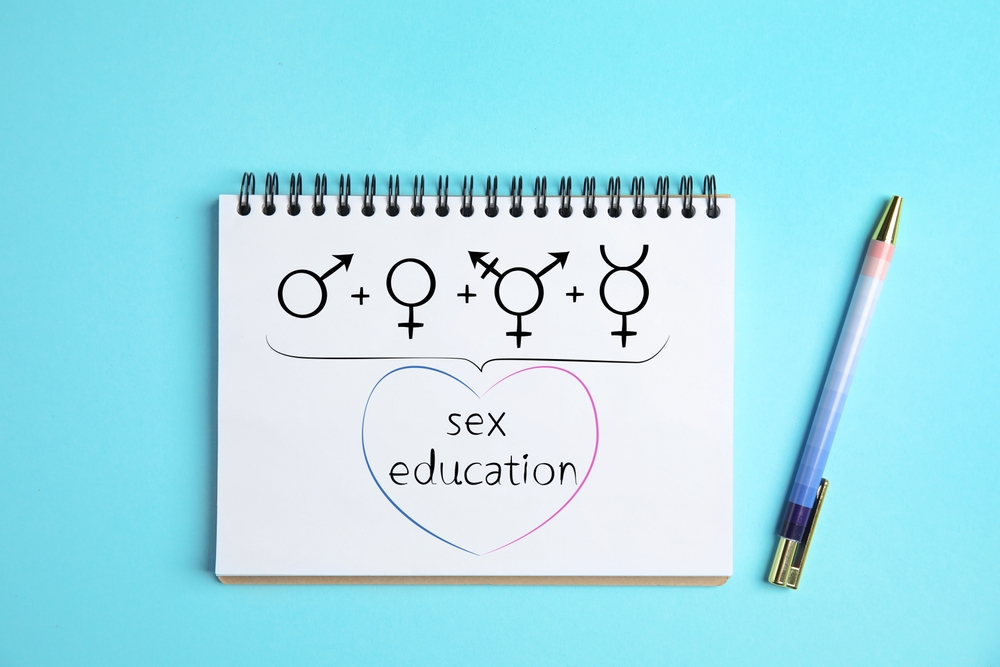Opinion
Sex education often skimmed the surface. It taught the basics of anatomy, contraception, and STI warnings. However, what about the deeper realities of intimacy, communication, and emotions? What about the messy, imperfect, and very human side of sex? If you entered adulthood feeling unprepared, you are not alone. Clearly, sex ed often leaves out essential truths.
Most lessons left us thinking sex was simply about biology or risks, missing the rich emotional layers tied to intimacy. Very few discussions addressed topics like vulnerability, consent beyond a yes or no, or the evolving needs people experience throughout their lives. Instead of equipping us with practical knowledge, many programs simply scared us into avoidance. Yet real sex education should have prepared us for growth, communication, and emotional care, not just anatomy tests.
Today, we have the chance to correct those gaps. Here’s the real talk we wish someone had given us and the conversation we deserved from the start.
Sex Is Different, Awkward, and Real

One of the biggest myths is that there’s a “normal” way to experience sex. In truth, sex looks different for every individual and every couple. Some people find it deeply emotional, while others experience it more physically. Preferences, comfort levels, and reactions vary widely, and that’s completely normal. Moreover, movies rarely show the awkwardness that often accompanies real intimacy. The first time or the first few times, might feel clumsy or disappointing. Bodies may not align perfectly. Clothing gets tangled. Laughter might erupt at unexpected moments. And guess what? That’s part of the experience.
Awkward moments are not signs of failure; instead, they remind us that sex is a human act, not a performance. Embracing imperfection builds intimacy and helps both partners relax. Laughing together can even become a bonding experience.
Here’s another truth: sex can be messy. It can involve bodily fluids, unexpected noises, and moments of vulnerability. It rarely mirrors the flawless scenes shown in the media. Furthermore, orgasms don’t always happen, especially for women. This doesn’t mean the experience failed. Ultimately, the connection, exploration, and pleasure matter more than any finish line.
Sometimes, sex can feel entirely different each time, depending on life stress, moods, or even the season of your relationship. Flexibility and patience often matter much more than physical technique.
Read More: Exploring Why Straight Men Cheat on Their Wives with Other Men
Communication, Protection, and Emotional Honesty

If sex education had a missing chapter, it would be titled “Talk About It.” Open and honest communication isn’t just helpful, it’s essential. Discussing likes, dislikes, boundaries, and fears creates a safe space. Moreover, communication isn’t limited to “big talks“; it includes checking in during intimate moments. Expressing what you enjoy and asking your partner what they need shows you care. Building trust ensures intimacy remains consensual, satisfying, and respectful.
Yes, sex ed mentioned condoms and birth control. However, it often missed an important point. Using protection is about more than avoiding pregnancy or STIs. In fact, prioritizing protection shows respect for yourself and your partner. It communicates that you value both of your health and futures. Having condoms on hand or initiating conversations about birth control enhances trust and shows maturity.
Protection Also Opens Important Conversations About Shared Responsibility

It encourages mutual respect rather than placing the burden on one partner. These discussions can deepen intimacy and show that care extends far beyond the bedroom. Sex isn’t just a physical act. It often stirs up emotions, even when unexpected. Sometimes, it deepens bonds. Other times, it might lead to confusion, guilt, or sadness. Therefore, recognizing your own emotions and respecting your partner’s feelings is crucial. You don’t have to pretend to feel a certain way. Instead, self-awareness and honesty make future experiences healthier and more fulfilling.
Learning about your own body through solo exploration can also enhance experiences with a partner. Masturbation isn’t shameful; rather, it’s a form of self-knowledge that empowers communication and confidence. Knowing your own preferences makes it easier to share them, creating better experiences for both people involved. Above all, emotional honesty creates space for growth, healing, and greater connection over time.
Expanding the Conversation: Virginity, Gender Identity, and What Sex Really Means

Another huge gap in traditional sex education is how it addresses “virginity.” Virginity is often portrayed as a milestone that marks someone’s worth or purity. In reality, virginity is a social construct. It holds different meanings for different people, and it does not define your value or your maturity. Rather than focusing on “losing” something, we should view first sexual experiences as personal choices made when someone feels ready, regardless of societal pressure.
Similarly, traditional sex ed often ignored discussions about gender identity and sexual orientation. Not everyone identifies as male or female, and not everyone is heterosexual. Sexuality is diverse, fluid, and personal. Comprehensive sex education must acknowledge and respect people of all gender identities and sexual orientations. Everyone deserves to feel seen, respected, and safe when learning about their bodies and relationships.
Finally, it’s crucial to remember that sex isn’t limited to penetration between a penis and a vagina. Intimacy can take many forms – kissing, touching, oral sex, mutual exploration, and emotional closeness. Defining sex too narrowly erases the experiences of LGBTQ+ individuals and places unnecessary pressure on others. Real sex education should emphasize that any consensual act that brings pleasure, connection, and mutual respect is valid.
Expanding our definitions helps create a more inclusive, compassionate world where everyone’s experiences are valued.
Separating Fantasy from Reality

Many got their first “sex education” through pornography, and that’s a problem. Porn often portrays unrealistic, exaggerated, and scripted versions of sex. Bodies are airbrushed. Performances are staged. Emotional intimacy is often missing. As a result, comparing real-life experiences to what you see on screen sets you up for disappointment. Real sex is about connection, consent, and communication, not about replicating fantasy scenarios.
It’s important to recognize that real intimacy is often slower, messier, and filled with conversation. It thrives on mutual respect and emotional care, not just physical choreography. By letting go of fantasy-driven expectations, we open ourselves up to authentic, deeply satisfying experiences that meet real emotional needs.
Furthermore, rejecting unrealistic standards frees us from insecurities about our bodies, performance, or desirability. True confidence comes from trust and understanding, not comparisons to scripted scenes.
The Real Sex Ed We All Needed

Sex education taught us how to label diagrams and recite statistics. However, it missed the heart of the matter – that sex is personal, evolving, and about communication, respect, and emotional nuance. It’s okay to be awkward and it’s okay to ask questions. It’s also okay to not have it all figured out. If there’s one thing you should take away, it’s this: sex isn’t just about mechanics. Rather, it’s about connection, trust, exploration, and respect – for yourself and your partner.
Real sex ed isn’t just about preventing bad outcomes. Instead, it’s about creating meaningful, joyful, and healthy experiences. And it’s never too late to start learning.
By giving ourselves permission to learn, communicate, and explore without shame, we reclaim the parts of sex education that were missing. We set a new standard, one based on honesty, kindness, and real human connection.
Read More: 30+ wild facts people learned about the female body and needed to share

